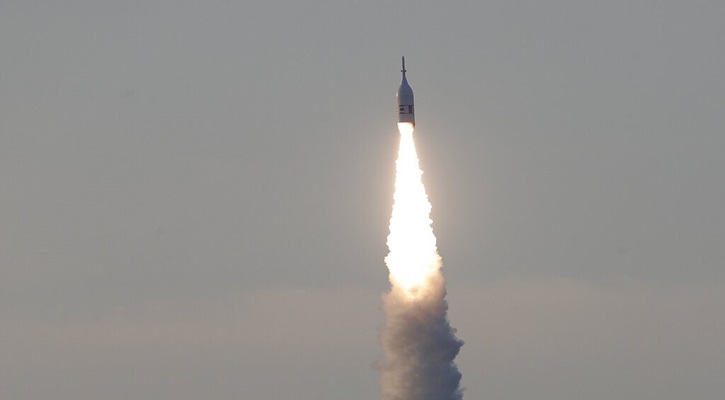Rolle im Portfolio
The Lyxor ETF Dow Jones Industrial Average is best suited as a core building block for a portfolio, providing exposure to a basket of very large U.S. companies from a range of industries. With 30 constituents, the index is not as diversified, at the security level, as many other widely-followed benchmarks for the U.S. market. For example the top position, IBM, makes up 11.2% of the index, and the top 10 stocks comprise 56%. On the other hand, many of the underlying companies are global leaders with broad reach and diverse revenue sources. Over the last 20 years, the Dow Jones Industrial Average has exhibited annualised volatility of 14.9%, versus 15.9% for the MSCI Europe. During the same period, it has shown a correlation to European equities (in local currency) of 81%, and to emerging markets equities (again, as measured in local currency) of 68%. U.S. equities comprise a large portion of many global equity indices, for example they made up 53.8% of the MSCI World Index at the end of March 2013. So combining this fund with a global product might result in an overweight to U.S. equities. It would therefore work better in conjunction with an EAFE or World ex-U.S. exposure. The fund distributes dividends on an annual basis; therefore it may suit an investor looking for some investment income.
Fundamentale Analyse
Though its fortunes have been overshadowed somewhat by the events unfolding in Europe, the United States has continued to show lacklustre progress towards economic recovery. The unemployment rate, while down from its highs, is still stubbornly lofty at 7.7%. GDP advanced by 2.2% in 2012, up from 1.8% in 2011 but still below the roughly 3% pace it has averaged over the last 30 years. One recent bright spot is that the long-anticipated recovery in U.S. housing seems to be taking hold. The S&P/Case Shiller Home Price Index 20-city composite was up 8.1% for the 12 months through the end of January 2013, although it is still down roughly 30% from its 2006 peak. Thanks to a last-minute deal reached by U.S. politicians, much of the immediate impact of the “fiscal cliff” was avoided, although payroll taxes did rise on December 31st, 2012. Still, the impact appears to have been muted, as consumer spending numbers for January and February were stronger than expected. More recently, spending cuts automatically triggered as part of a sequestration began to take hold in March 2013, and could put a significant dent in this year’s economic output. To pick up the stimulus slack, monetary policy has been extremely accommodative since the global financial crisis. The Federal Reserve has lowered short term interest rates to near zero, and tied its policy objectives to job growth by indicating that rates will remain low until the unemployment rate falls to 6.5%. The Dow Jones Industrial Average has returned 10.00% per year over the last 20 years. Like most equity exposures, the index took a drubbing during the 2007-2008 financial crisis, but it has rallied considerably since then as successive rounds of quantitative easing have encouraged investors to move into risky assets. After bottoming out at 9.1 in February 2009, the price-to-earnings ratio of the Dow Jones Industrial Average had climbed back up to 15.0 at the end of March 2013. That still puts it below its 10-year average of 15.9.
Indexkonstruktion
The Dow Jones Industrial Average has been around since the late 19th century. It is made up of 30 constituent stocks, and that number is fixed, so that for one to be added another must leave. It is weighted by price, rather than market capitalisation, with a divisor that changes to smooth out the effects of stock splits. Companies are added and removed on an as-needed basis by the managing committee, although constituent changes are rare. In choosing new entrants, the committee selects not just the biggest names but also uses some qualitative criteria, such as the reputation of the firm, whether it’s of interest to a large number of investors, and the effects of its inclusion on the index’s overall sector balance. The universe of potential additions excludes transportation and utility companies. The index is broadly diversified by industry. The largest is Industrials, representing 20.8% of the index at the end of March, followed by Information Technology with 16.3%, and Consumer Discretionary at 12.0%. The only GICS sector without representation is Utilities. The index has significant portfolio concentration, with 56% in just the top 10 names. The top constituents are IBM, Chevron, and 3M Co., with respective weights of 11.2%, 6.3%, and 5.6%. The median market capitalisation of constituents is a hefty $118 billion.
Fondskonstruktion
The fund uses synthetic replication to provide exposure to the underlying benchmark, entering an unfunded swap transaction with parent bank Societe Generale. The fund uses investors’ cash to buy a substitute basket of securities, the performance of which is exchanged for the performance of the index. Lyxor provides full transparency on the components of the substitute basket, which is made up entirely of equities. The fund aims to maintain zero counterparty exposure by reviewing the swap on a daily basis and resetting whenever its value becomes positive. At the time of writing the substitute basket was valued at 103.78% of the net asset value of the fund. The fund’s holdings, which are monitored daily by Lyxor’s asset manager, are held in a segregated account at Lyxor’s custodian, Societe Generale Security Services. Under the terms of the swap, the counterparty agrees to provide the fund with exposure to the total return of the underlying index, net of any associated taxes, costs, or fees. At the time of writing the fund had assets of €483 million.
Gebühren
The fund has an expense ratio (TER) of 0.50%, which ranks as middling among the small number of offerings with the same benchmark, and high relative to many other funds providing exposure to U.S. equities. Other costs potentially borne by the unitholder but not included in the total expense ratio include swap fees, and bid-ask spreads and brokerage fees when buy and sell orders are placed for ETF shares.
Alternativen
In addition to the Dow Jones Industrial Average, there are a number of index alternatives for the U.S. equity market, including the S&P 500, the MSCI USA, and the technology-heavy NASDAQ. To get exposure to the Dow Jones Industrial Average there are a few choices, including iShares DJ Industrial Average, ComStage ETF Dow Jones Industrial Average, and CS ETF (IE) on Dow Jones Industrial Average. Of these, the Lyxor fund is the biggest. The fund with the lowest expense ratio is the CS product, with a TER of 0.33%.
Die in diesem Artikel enthaltenen Informationen dienen ausschließlich zu Bildungs- und Informationszwecken. Sie sind weder als Aufforderung noch als Anreiz zum Kauf oder Verkauf eines Wertpapiers oder Finanzinstruments zu verstehen. Die in diesem Artikel enthaltenen Informationen sollten nicht als alleinige Quelle für Anlageentscheidungen verwendet werden.

















